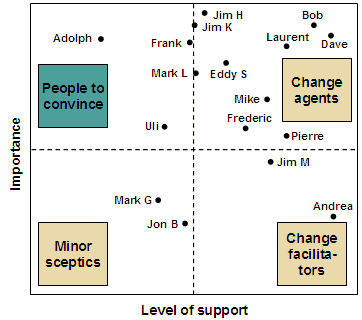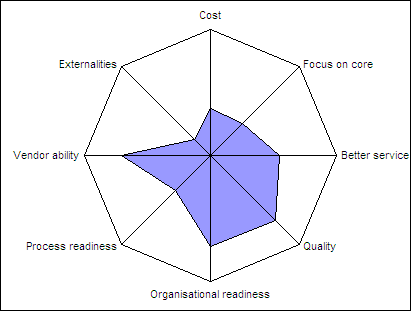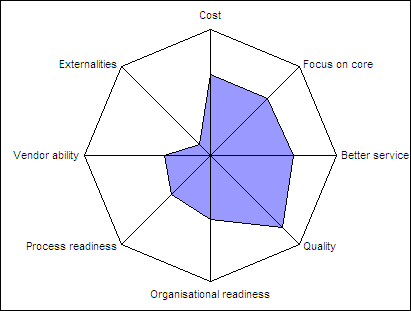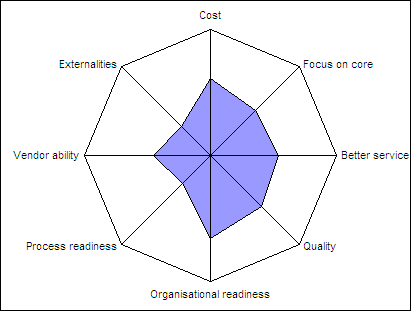Year: 2006
Hardest lessons for startups
Paul Graham on The hardest lessons for startups to learn.
So why do I spend so much time thinking about startups? I’ll tell you why. Economically, a startup is best seen not as a way to get rich, but as a way to work faster. You have to make a living, and a startup is a way to get that done quickly, instead of letting it drag on through your whole life.
Banana proves God
The banana proves God’s existence. I think they’re serious.
Misconceptions spread by textbooks
Misconceptions spread by textbooks. This site lists the facts, contrary to what most textbooks say about them.
Facts:
- The ocean is blue because water is a blue substance. Not because it reflects the blue sky.
- The sky is blue because air is blue.
- Clouds actually remain aloft because they are warm inside.
Change management
Change management can be analytic, as opposed to touchy-feely.
Our client’s operating margin was falling. The bosses wanted to offshore their back office. Others weren’t convinced. To manage this change, we needed three questions answered:
- Who’s not convinced?
- Why aren’t they convinced?
- What’ll convince them?
Who’s not convinced?
We plotted the level of support and importance of key people on the stakeholder support matrix. This split people into 4 groups (below). Then we showed it around to people and had them move people around on the matrix.
- Minor sceptics. We largely ignored them
- Change facilitators. We tasked them with roles in the project
- Change agents. We made them influence the others
- People to convince. The ones we needed to focus on
This is a simple concept, actually. The insight is, putting names on such a matrix, and getting people to move them around, is a robust way to get everyone on the board and at the right spot.
Why aren’t they convinced?
We sent everyone a list of benefits and issues in outsourcing. They rated them. We grouped the results and plotted them. Here’s the result for Uli.
Uli saw more issues than benefits. Quality and possible better service were benefits. But he was afraid the company wasn’t ready, and vendors wouldn’t understand their operations.
The advantage of these charts is that you can put them side by side, and compare where different people stand. It gives you a great view of why they’re objecting, and whom you can use to counter that.
What’ll convince them?
Once we knew why people objected, it was easy to manage.
For example, to counter Uli’s fear of organisational readiness, we got people who felt this was not an issue to put forward their counterpoints.
To counter fears of vendor ability, we got a bunch of them to visit BPOs in India, and spread their confidence to others.
We arranged workshops, making sure that each group had people to convince and change agents.
This did require a lot of soft skills. But the success was largely because of the structured ground-work. Change management can be quite analytic.
How users read on the web
Jakob Nielsen’s old write-up on how users read on the web. Actually, this is how people read anything. I write my e-mails, PowerPoint presentations, and Word reports this way.
Sketchup is free
Sketchup (from Google) is now available for free download. It’s a 3D modelling tool.
The Long Tail of information sharing
The Long Tail of information sharing. Even on Wikipedia, fewer than 2% have contributed over 100 articles. Over 85% have contributed fewer than 5 articles. A Wiki inside an organisation is unlikely to reach critical mass, left to itself.
Paul Graham on What Drives Bloggers
I think what most bloggers are doing is thinking out loud.
It’s a little misleading to talk of “putting things into words,” because that implies the ideas come first. In fact, expressing thoughts creates them. And especially expressing thoughts to other people, even people you don’t know. So I think the reason many people like blogging is that they like the thinking it causes.



